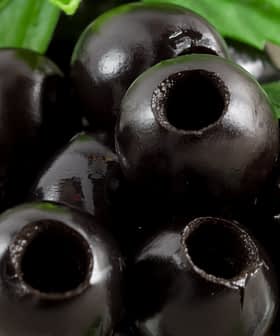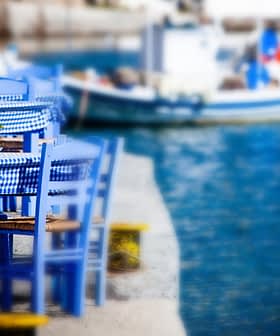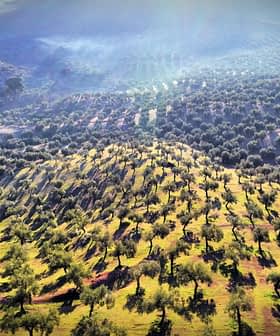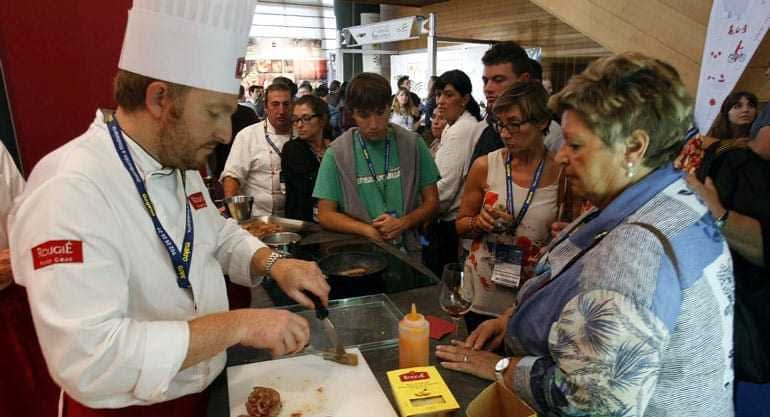
Extra virgin olive oil is considered by more chefs as a highlight of contemporary cuisine, a multifaceted ingredient for imaginative dishes as well as for everyday cooking. So, it’s no surprise that it played an important role during the 16th edition of Gastronomika, the International Gastronomy Congress held from 5 to 8 October 2014 in San Sebastian, the beautiful seaside town in the Basque Country.
While Italy was this year’s guest country, with important Italian chefs and specialty food vendors invited to present their recipes and philosophies on stage alongside their Spanish colleagues, the exhibiting area displayed mainly products hailing from Spain.
The main Spanish oil-producing regions as well as single producers had their EVOOs on display while no Italian representative was to be seen, proof to some that Italy does not give sufficient attention to the importance of extra virgin olive oils for haute cuisine.
The Jaén province, known as the world capital of olive oil and the biggest producer in Spain, had a large stand showcasing the best products of the region. Among them, we tasted the Bravoleum Picual made by Hacienda El Palo, a pleasant and slightly spicy oil with flavors of green olive, sweet almonds and a delicate banana fruitiness, coming in a stylish violet bottle.
The PDO Sierra de Cazorla — a natural enclave of the province of Jaén, with a total surface area of 37,500 hectares of olive groves where Picual and Royal olives thrive — had its own stand, to present a number of traditional extra virgin oils and some peculiar products.
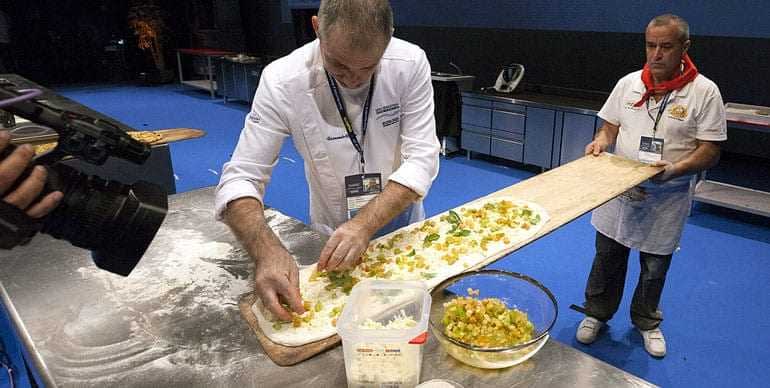
Aceite Verde Quesada – a merchant and bottling company led by José López – presented an extra virgin oil with tiny gold or silver particles floating in the bottle. The precious metals don’t change the taste of the oil, they’re simply bling to impress the consumer (and increase the price).
López also proudly presented what he claimed was the first naturally smoked extra virgin olive oil. A Picual oil is cold-smoked at around 14 – 18 (C) degrees for 8 hours with an “organic” smoke obtained from the shells of dried fruits such as nuts and hazelnuts, giving the oil an entangling aroma, while disguising the taste of the Picual.
The Caceres Province, in Extremadura, proposed several products featuring extra virgin olive oil of the Gata-Hurdes PDO. Mainly obtained from century-old olives of Manzanilla Cacerena variety, Caceres oils are intensely fruity with nice flavors of banana, apple, tomato and freshly cut grass and a very well-balanced taste.
El Jardin de Alamayate, a company which runs several farms in the areas of Madrid and Andalusia, brought to Gastronomika excellent extra virgin olive oils labeled Alma de Jerez, made at the Los Rachiles farm in Jerez de la Frontera. Apart from the company’s two blends made from Verdial, Hojiblanco, Picual and Arbequina olives, which won Gold and Silver Awards at the 2013 New York International Olive Oil Competition, they also presented a special early harvest, unfiltered Picual freshly made for the fair.
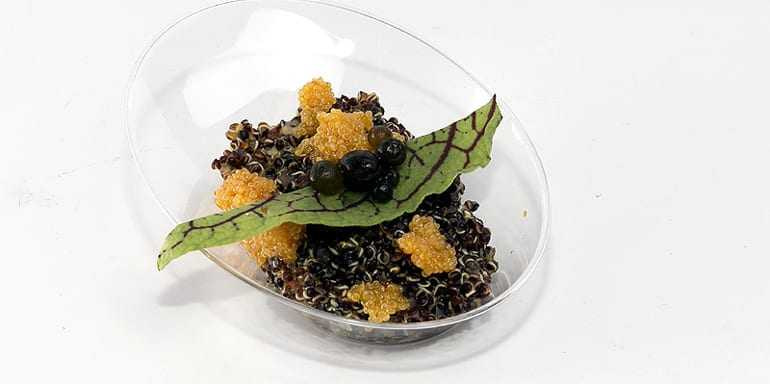
Caviaroli presented a new version of its innovative product — an olive oil caviar made using a special spherification technique developed with the collaboration of the chef Ferran Adrià and his Alìcia Foundation. Beside the Picual extra virgin oil spheres, they now produce an Arbequina, for a gentler touch to both salty and sweet recipes, and varieties flavored with basil, chile and rosemary.
A new recipe book made with Eduard Xatruch, chef at the Compartir restaurant in Cadaqués together with Oriol Castro and Mateu Casañas — all of them former chefs at El Bulli — offers ideas for using Caviaroli in the kitchen.
Finally, an Italian chef offered extra virgin olive oil as a main ingredient, not just a “fat,” in a dish he presented at the congress. Salvatore Tassa, acclaimed and respected owner and “cuciniere” (he doesn’t want to be called a “chef” but a cook) at Colline Ciociare in Acuto, not far from Rome, presented a contemporary version of an old classic of Italian cuisine, pasta al pomodoro.
In his version, however, the freshly made pasta is emulsified with extra virgin olive oil at a temperature of 40 ºC, (104 ºF) at which the oil molecules “open” and thoroughly penetrates into the pasta, thus becoming part of it. The dish is then completed with dried tomatoes and a sprinkle of aged Parmesan: totally Italian.


